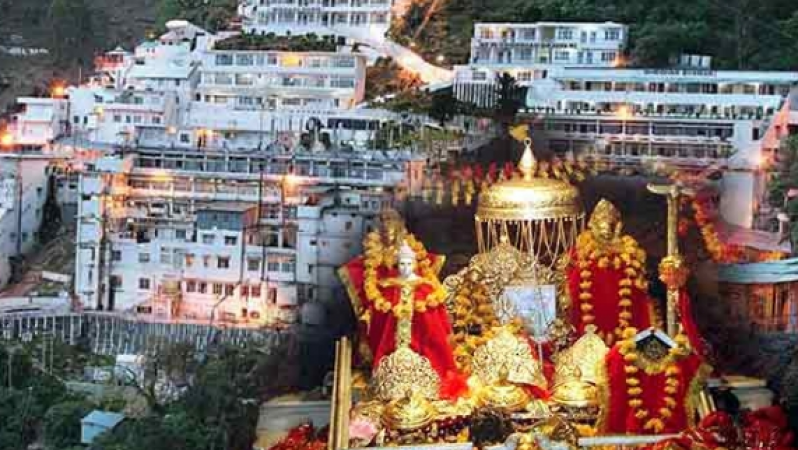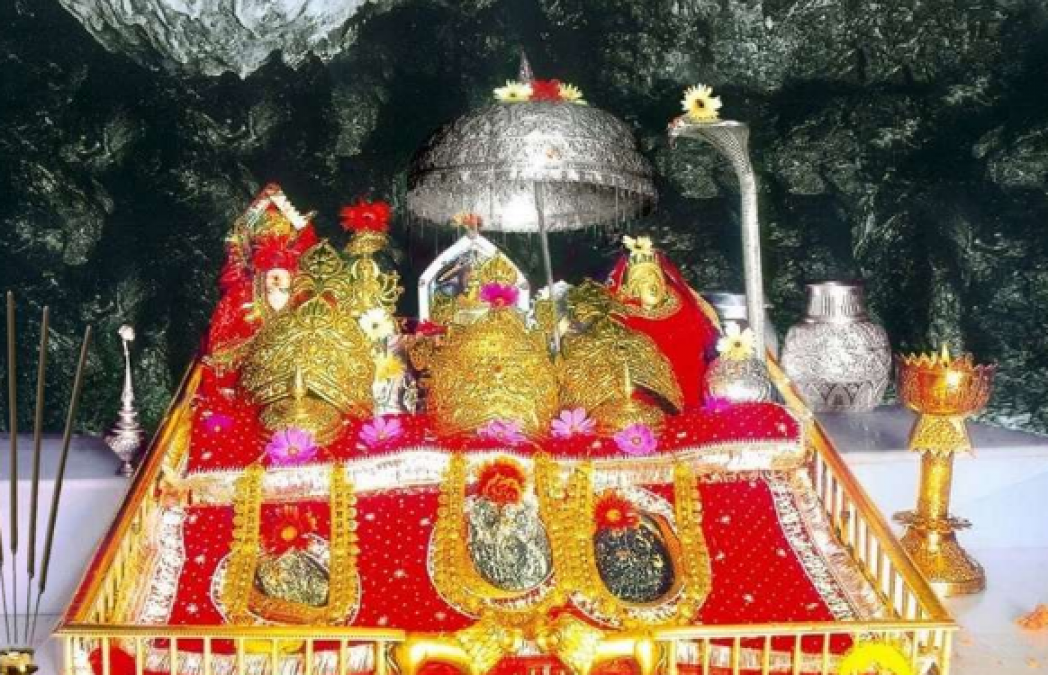
The Vaishno Devi Temple, located in the picturesque Trikuta Hills of the Indian state of Jammu and Kashmir, holds immense religious significance for millions of devotees. This ancient shrine dedicated to the Hindu goddess Vaishno Devi is renowned for its spiritual aura and the arduous pilgrimage that devotees undertake to seek the blessings of the divine mother. In this article, we will delve into the history of Vaishno Devi Temple, tracing its origins and exploring the rich traditions associated with worshiping at this sacred abode.
History and Legends:
The history of Vaishno Devi Temple dates back to ancient times, shrouded in legends and mythology. According to popular belief, Vaishno Devi was born as a manifestation of the divine mother, combining the energies of Goddess Lakshmi, Goddess Saraswati, and Goddess Kali. The legends tell the story of how the goddess assumed the form of a young girl named Vaishnavi and embarked on a mission to rid the world of evil.
The tale of Vaishnavi's journey to the holy cave is an integral part of the temple's history. It is said that Bhairavnath, a demon king, relentlessly pursued the goddess, prompting her to take refuge in the Trikuta Hills. She meditated there for nine months, and upon emerging from her meditation, she blessed the area and transformed herself into stone. The sacred cave where she resided became the Vaishno Devi Temple, and since then, it has attracted devotees from all walks of life.
The Pilgrimage:
The pilgrimage to Vaishno Devi Temple is a significant spiritual endeavor for devotees. Every year, millions of pilgrims undertake the arduous journey to seek the blessings of the divine mother. The trek to the temple is known for its rigorousness, and devotees often embark on it with immense devotion and determination.
The traditional route to the temple begins at Katra, a small town at the foothills of the Trikuta Hills. Pilgrims commence their journey by walking along a well-defined path, passing through scenic landscapes and enchanting natural beauty. The path, around 13 kilometers long, is dotted with various rest stops and facilities to aid the pilgrims along the way.
As devotees make their way through the winding trails, they chant religious hymns, sing devotional songs, and engage in fervent prayers. The atmosphere is filled with an air of spirituality and devotion. The journey is physically demanding, but the faith of the pilgrims serves as a guiding light, giving them the strength to continue.
Upon reaching the Vaishno Devi Temple, devotees offer their prayers and seek the blessings of the goddess. The temple complex comprises several shrines dedicated to different deities, including the main sanctum housing the idol of Vaishno Devi. The ambiance within the temple is one of profound reverence and spirituality.

Worship Rituals:
The worship rituals at Vaishno Devi Temple are steeped in tradition and devotion. Upon entering the temple, devotees are greeted by the resonating sound of religious chants and the aroma of incense. They proceed through various sections of the temple complex, each dedicated to a different deity.
The main shrine houses the idol of Vaishno Devi, adorned with exquisite jewelry and vibrant attire. Devotees offer flowers, fruits, and prasad (devotional food) to the goddess as a symbol of their love and devotion. The priests perform elaborate rituals, including aarti (ceremonial worship with lamps), in honor of the goddess.
Apart from the main shrine, there are also smaller shrines dedicated to Lord Rama, Lord Ganesha, and Lord Hanuman, among others. Devotees visit these shrines to offer their prayers and seek the blessings of these deities as well.
The Vaishno Devi Temple stands as a testament to the unwavering faith and devotion of millions of devotees who undertake the sacred pilgrimage to seek the blessings of the divine mother. Its rich history, intertwined with legends and mythology, adds to its allure and significance. The arduous journey to the temple is not merely a physical undertaking but a spiritual quest that connects devotees with their inner selves and the divine realm.
As one embarks on the pilgrimage to Vaishno Devi Temple, the physical challenges are overshadowed by the overwhelming sense of devotion and spiritual fulfillment. The temple's atmosphere, rituals, and the idol of Vaishno Devi herself exude a divine energy that touches the hearts of the devotees, leaving an indelible mark on their souls.
Know about the roots of the ancient religion of India
Gomateshwara Temple: Monolithic Statues
The Significance of Bells in Temples: Unveiling Their Musical Charm